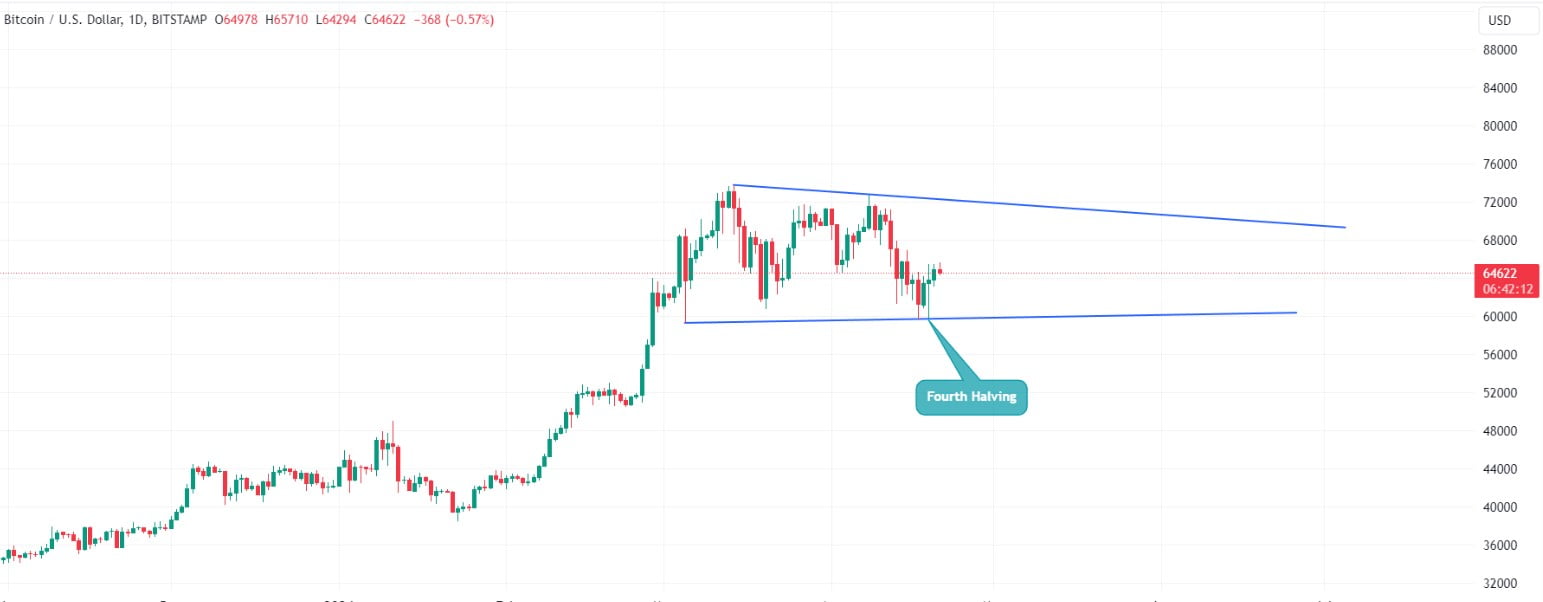On April 19, the leading cryptocurrency, Bitcoin (BTC), completed a significant milestone known as the halving. This event cuts the reward for Bitcoin mining operations in half. This fourth reduction from 6.25 Bitcoins per block to 3.125 Bitcoins aims to control inflation and mimic the value increase caused by a reduced supply, similar to precious metals.
Historical Data on Halving
According to historical data, the reduced supply and ongoing demand could drive prices higher, which typically occurred before significant rises in Bitcoin prices after past halvings. What can be expected after this fourth halving? Bitcoin is currently trading at a level of $64,531, showing a daily loss of 0.73%. Despite the completion of the fourth halving on April 19, BTC prices have traded relatively stably, supporting the ongoing consolidation of most major cryptocurrencies.
The neutral candle formation on the daily chart indicates that neither buyers nor sellers are making significant moves, but such behavior is common before the start of a post-halving rally. Historical data reveals that significant Bitcoin rallies usually began some time after halving events. The first Bitcoin halving occurred on November 28, 2012, but a sustainable rise did not start until about 40 days later, at the beginning of January 2013.

Reports from Analytical Firms on BTC
The second halving took place on July 9, 2016, but it took about 60 days for the market to show recovery, marked by a higher initial peak in the second week of September 2016. Approximately 70 days after May 11, 2020, a price recovery followed in late July 2020.
If the model holds true, Bitcoin prices may need 2-3 months to stabilize before starting a post-halving rally. According to the on-chain data provider Spot On Chain, Bitcoin historically did not experience sudden price increases immediately after a halving. Instead, new all-time high levels tended to emerge 6 to 12 months after the event. Following the first event in November 2012, Bitcoin’s price rose from $12 to over $1,000 by the end of 2023.

 Türkçe
Türkçe Español
Español










